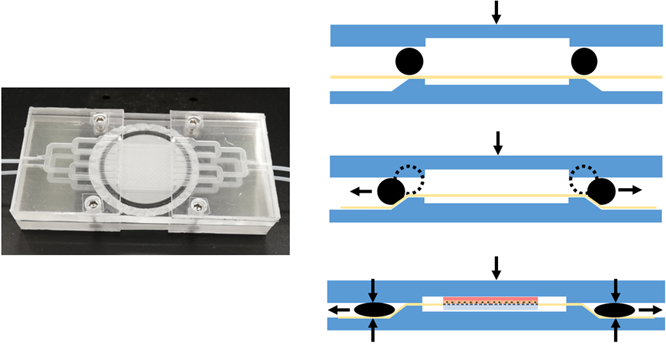Current research into a Bio-Artificial Kidney (BAK) uses “living membranes” of immortalized proximal tubule cells cultured on hollow fiber membranes (HFM) which could considerably improve the removal of protein-bound uremic toxins (PBUTs), which are difficult to remove by conventional dialysis. Cells are seeded and cultured on the apical side of the HFM, thus in a convex configuration, and form a monolayer along the fiber. A hollow fiber prototype consists of 3-4 fibers (6-7 cm in length) with a total surface area of ~4 cm2. However, with this configuration only small amount of fluids can be cleared of toxins . Thus, the ideal BAK would contain thousands of fibers coated with cells that would clear larger volumes of plasma. However, due to the large number of fibers packed in the housing chamber of the device, the high dialysate flow, and the culture of cell on the fixed convex topography that does not replicate the topographical features of proximal tubule, the efficient and smooth upscaling of the system is severely hampered.

In collaboration with the Experimental Pharmacology group at Utrecht University, we propose a redesign of the BAK by using flat patterned membranes that can accommodate cells and be incorporated in a dual chamber perfusable device. E-Pharma has established expertise in therapeutic strategies to accelerate kidney function recovery. Some of their current interests include kidney cell lines, BAK, toxin removal and kidney tissue engineering.
During the project you can:
- Develop a micro/milli-fluidic clamp for ‘large scale’ flat patterned membranes using rapid prototyping techniques.
- Create micro-patterned surfaces with concave shapes for patterned membrane formation.
- Develop a protocol for on-chip cell culture or transporting pre-cultured membranes into the perfusion device.
- Characterize the toxin clearance capabilities of the redesigned BAK.
Contact person : Dr. Jeroen Vollenbroek (j.c.vollenbroek@utwente.nl)
